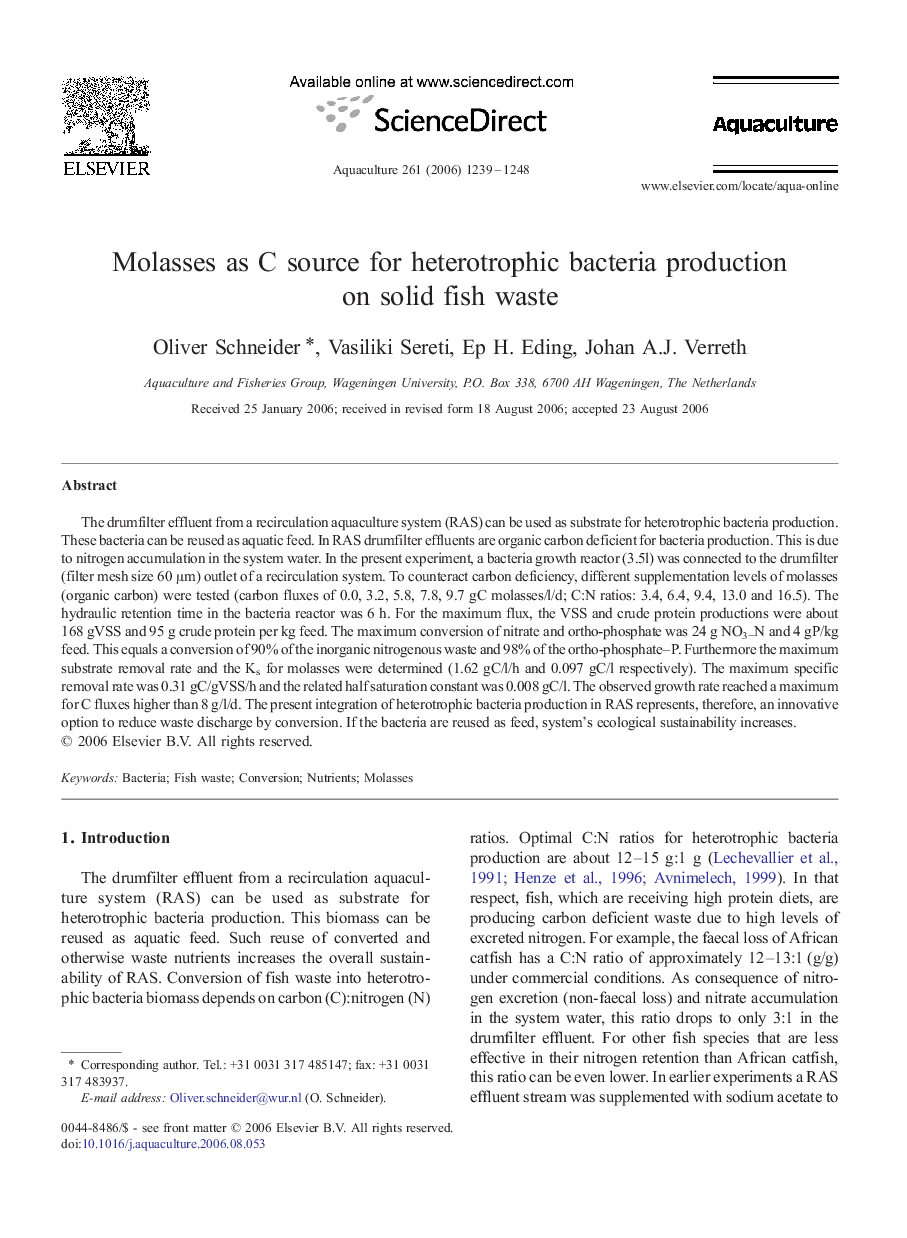| Article ID | Journal | Published Year | Pages | File Type |
|---|---|---|---|---|
| 2425512 | Aquaculture | 2006 | 10 Pages |
The drumfilter effluent from a recirculation aquaculture system (RAS) can be used as substrate for heterotrophic bacteria production. These bacteria can be reused as aquatic feed. In RAS drumfilter effluents are organic carbon deficient for bacteria production. This is due to nitrogen accumulation in the system water. In the present experiment, a bacteria growth reactor (3.5l) was connected to the drumfilter (filter mesh size 60 μm) outlet of a recirculation system. To counteract carbon deficiency, different supplementation levels of molasses (organic carbon) were tested (carbon fluxes of 0.0, 3.2, 5.8, 7.8, 9.7 gC molasses/l/d; C:N ratios: 3.4, 6.4, 9.4, 13.0 and 16.5). The hydraulic retention time in the bacteria reactor was 6 h. For the maximum flux, the VSS and crude protein productions were about 168 gVSS and 95 g crude protein per kg feed. The maximum conversion of nitrate and ortho-phosphate was 24 g NO3−N and 4 gP/kg feed. This equals a conversion of 90% of the inorganic nitrogenous waste and 98% of the ortho-phosphate–P. Furthermore the maximum substrate removal rate and the Ks for molasses were determined (1.62 gC/l/h and 0.097 gC/l respectively). The maximum specific removal rate was 0.31 gC/gVSS/h and the related half saturation constant was 0.008 gC/l. The observed growth rate reached a maximum for C fluxes higher than 8 g/l/d. The present integration of heterotrophic bacteria production in RAS represents, therefore, an innovative option to reduce waste discharge by conversion. If the bacteria are reused as feed, system's ecological sustainability increases.
